“Feminine Space: Peng Wei” Opens at the Guangdong Museum of Art
Peng Wei’s solo exhibition “Feminine Space: Peng Wei” will be held at the Guangdong Museum of Art from July 8 to July 29, 2020. The show is organized by the Guangdong Museum of Art and curated by noted art historian and University of Chicago professor Wu Hung. Guangdong Museum of Art director Wang Shaoqiang serves as the exhibition director for the show.
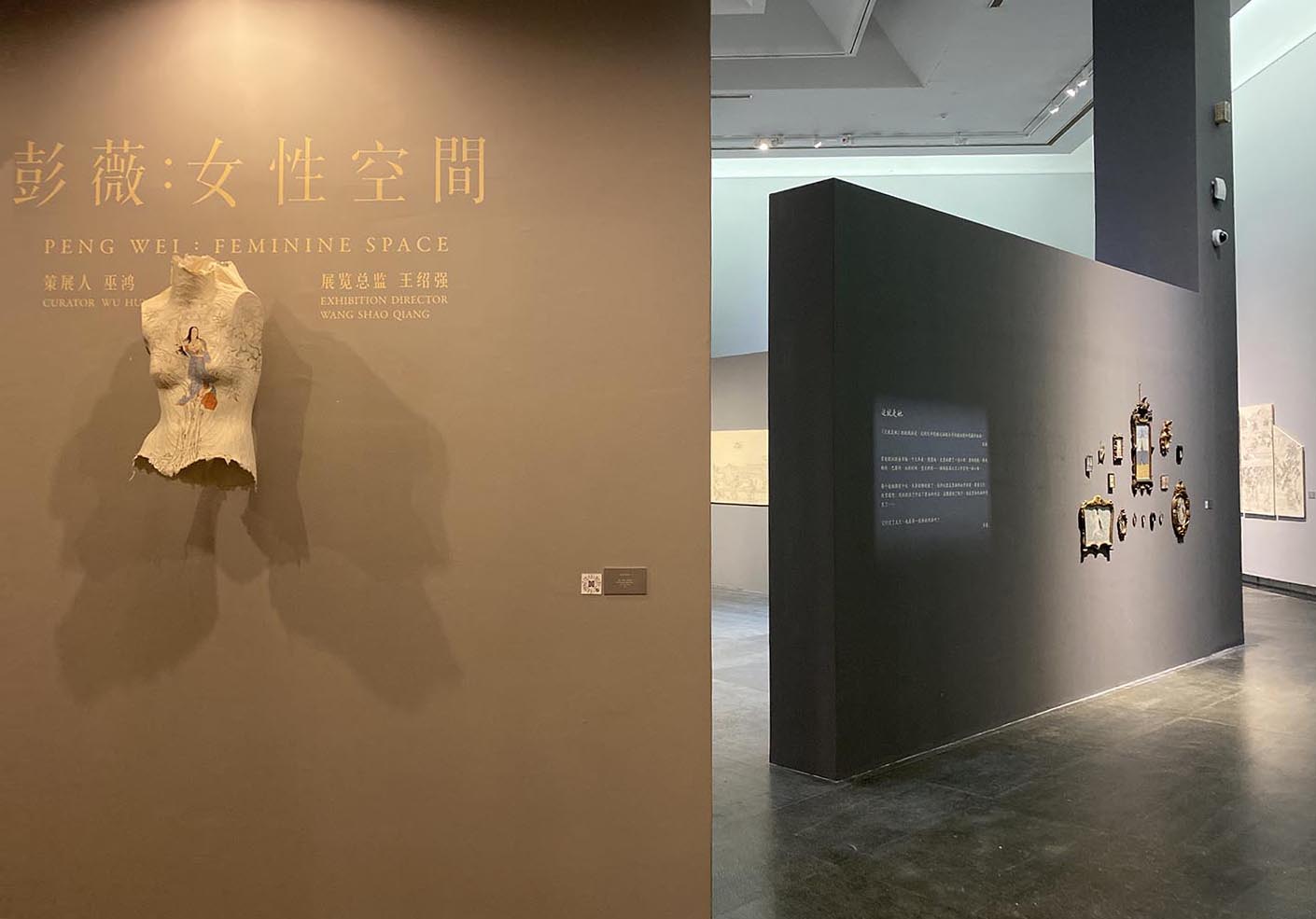
The exhibition presents seven series that Peng Wei created from 2017 to 2020—
Seven Nights,
Hi-Ne-Ni, Old Tales Retold,
Peek,
This is Her,
The One In My Dreams, and
Material World—spanning the multiple forms of ink, installation, and photography.
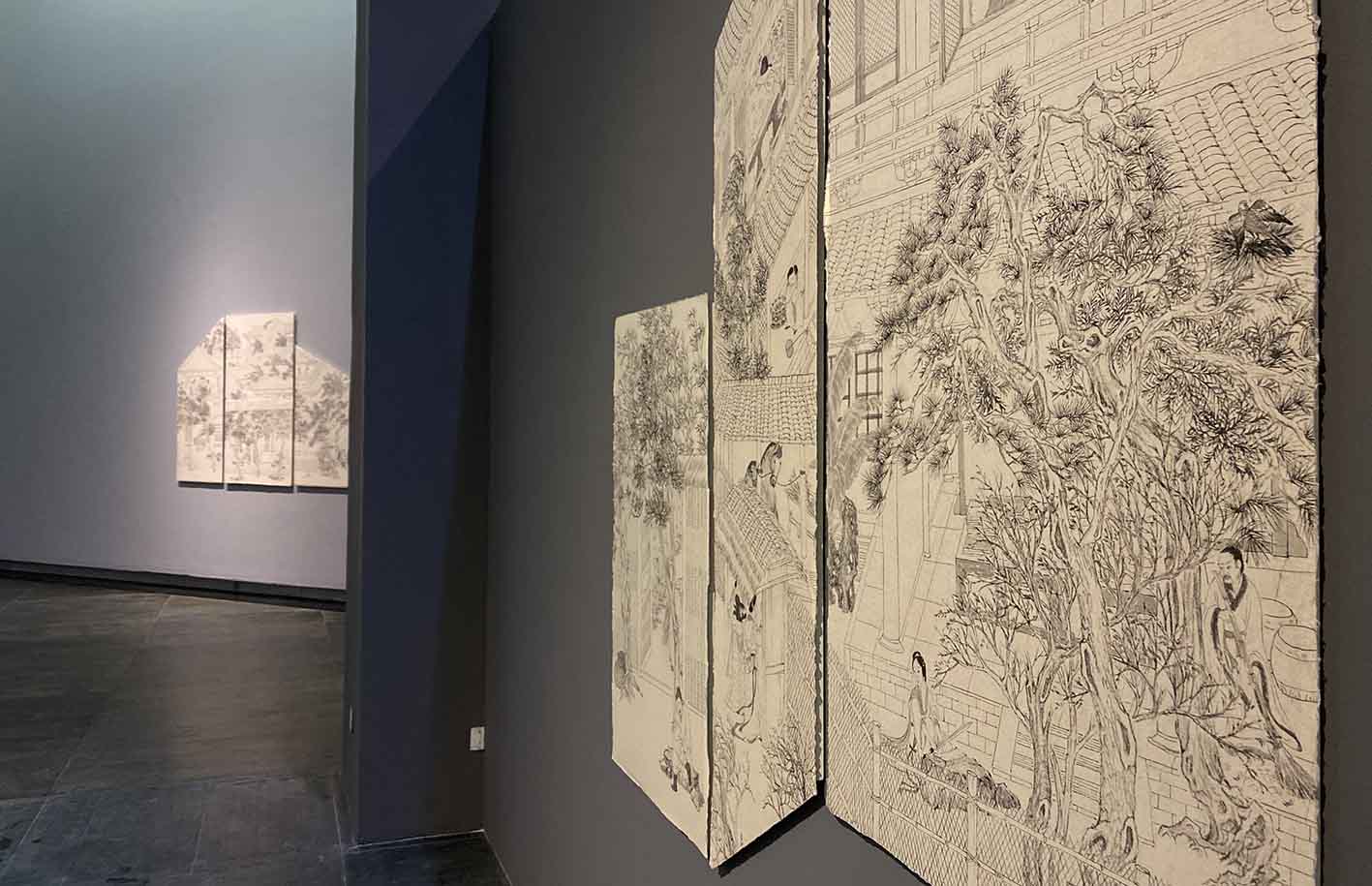
The dialogue between past and present has always been woven into Peng Wei’s work. In contrast to Peng’s solo show “I Thought of You” at the Suzhou Museum four years ago, “Feminine Space” at the Guangdong Museum of Art is a complete transformation from the inside out. The artist shifts from an indifferent, distant bystander into an infinitely imaginative storyteller, from a lack of intervention to intervention, from reminiscence in the past tense to inquiry in the present tense. She undertakes the obligation to ask questions. However, Peng Wei’s stories are not the simple pursuit of “female identity” as a fashionable phrase; through the recreation of external and internal space, she shares her perceptions of women’s common fates, expressing complex feelings that are often difficult to articulate.
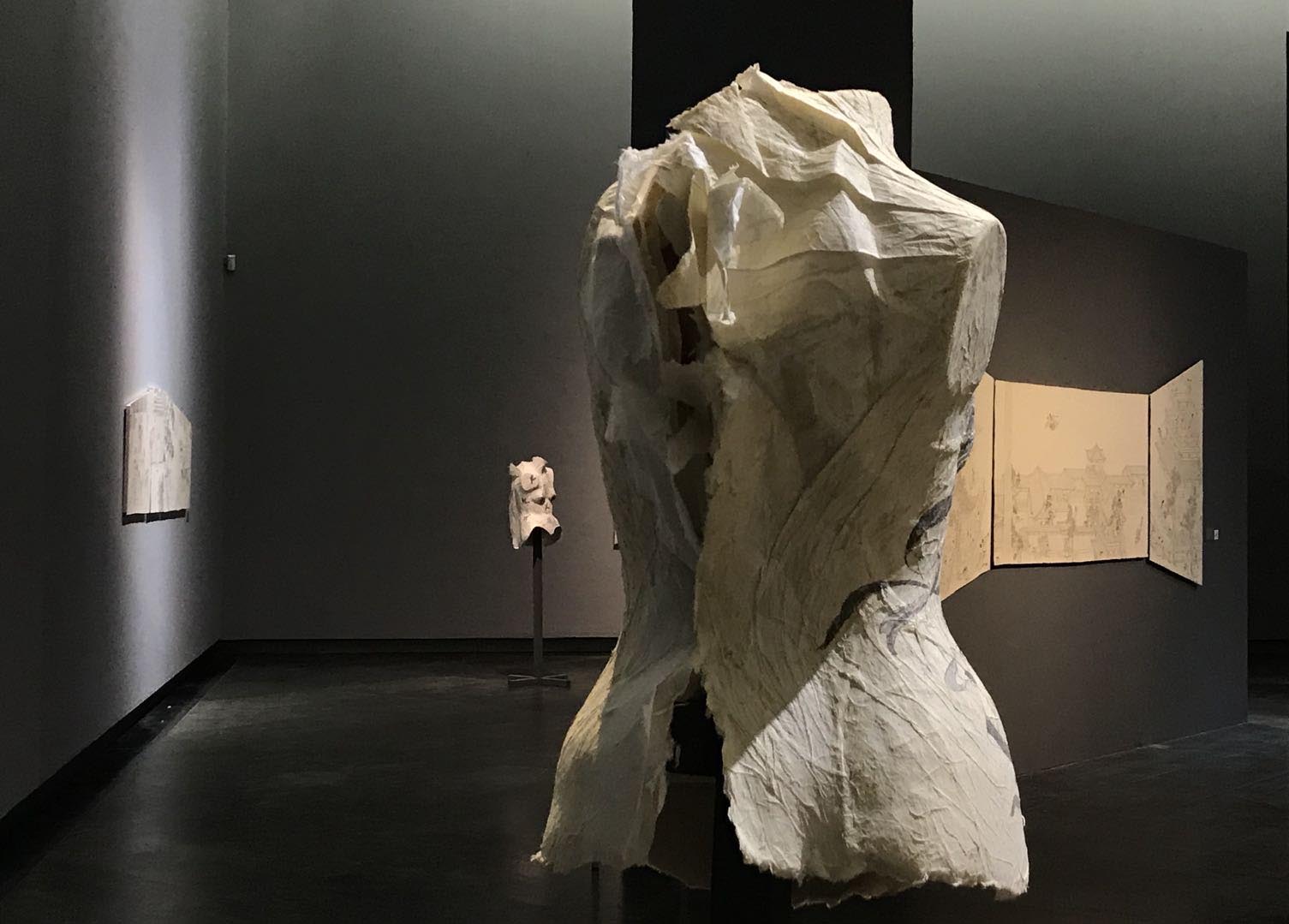
In Gallery 5, the classical frames of
In My Dreams and the female figures painted in an almost Persian miniature style depart from Eastern and Western models, and perhaps they are depictions of the artist herself.
Seven Nights and
Hi-Ne-Ni recover the conventional viewing distance, then pull the viewer back out to look over reality. The inspiration for
Seven Nights comes from the dreams shared by the artist and a friend. The position and construction of an assortment of architectural spaces provide entirely different sites of activity; the intersecting creative inspirations, the strange switches in the paintings, and the special tensions of dreamworlds create a feminine space both visually and psychologically. Using flights of fancy in line drawing, Peng Wei paints a complex and multi-faceted narrative. Echoing
Seven Nights, the fragmented female bodies in the paper installations of
Hi-Ne-Ni seem to break free of restrictions, bringing the viewer out of ordinary spaces. The installation and photography work
Material World, like the finishing stroke in a painting, ends the exhibition. “The tiny Buddha’s hand citrons still seem to be shrinking, and we can imagine them ending up as specks of dust,” Wu Hung noted.

In Gallery 6, the fifty-meter-long scroll installations
Old Tales Retold and
Paragons of Feminine Virtue, like the grand backdrop of history, push the viewer’s line of sight dozens of meters high. While engaging with tradition, the works are a metaphor for the women’s rebellious spirit when faced with the Confucian ethical code. The ancient motivations for committing suicide—loyalty, filial piety, chastity, and righteousness— find a broader range of interpretations in the modern moment.
In My Dreams, which appear like a scattering of pages, results from Peng’s discussions and correspondence with Judith Zeitlin, an academic who has spent many years researching images of female spirits in literature. The juxtaposition of
Strange Tales and letters written by female authors from the West compels viewers to re-examine the ideal woman in male narratives through contemporary eyes. The details in
Peep pull viewers in closer, “so close that,” as Wu Hung said, “they almost want to cross the boundary of the frame to look for cut off or concealed images.” The knives, ornamental scepters, startled birds, combs, and other meaningful symbols are worth this closer look, because they allow viewers to roam through multiple times and spaces, both past and present.
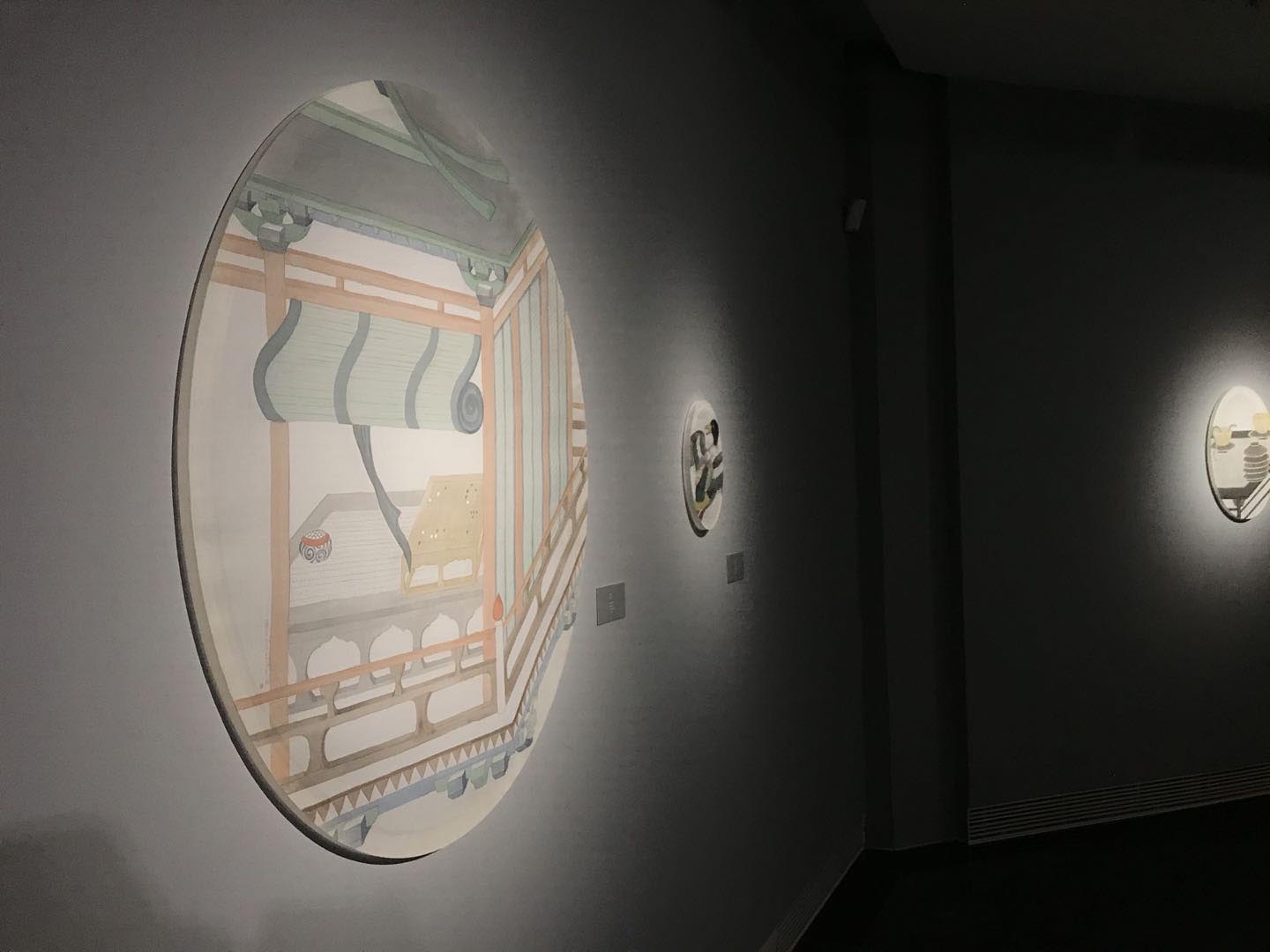
Small paintings just a few centimeters high and scrolls several dozen meters high are presented together in the same galleries. As Wu Hung, the exhibition’s curator, noted, “These different scales, proportions, and distances, as well as the consciousness and unconsciousness they embody, turn works united by a title into self-sufficient series. When every series is appreciated individually in a more natural setting, they spontaneously capture a time and space for looking, starting in an appropriate place and ending at an appropriate moment.”
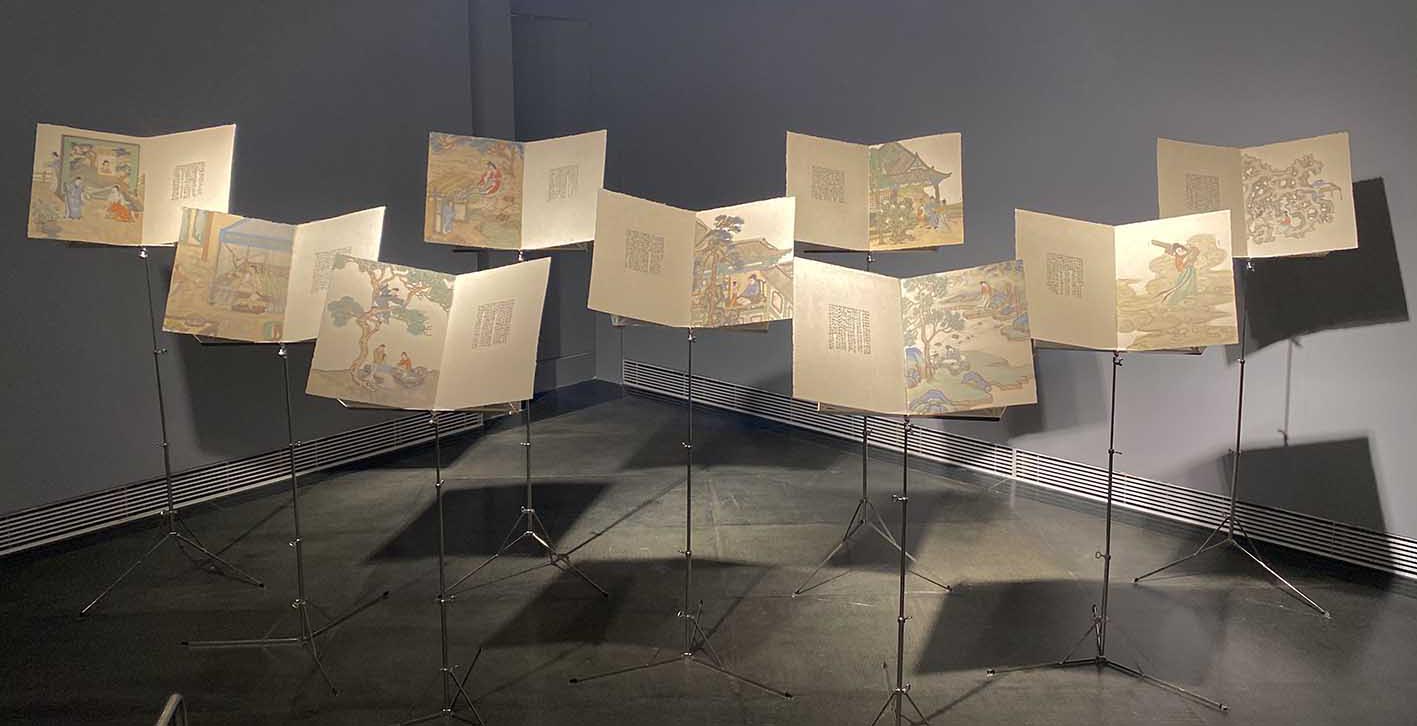
“The multiple spaces in Peng Wei’s work reveal the diversity of her ways of thinking. However, one thread runs through these series; whether the works are large or small, three-dimensional or two-dimensional, they begin and end with women, or more precisely, they convey Peng’s era-spanning dialogues with women from the past. She is not pursuing real or fictional female types; she is responding to or remolding these types.
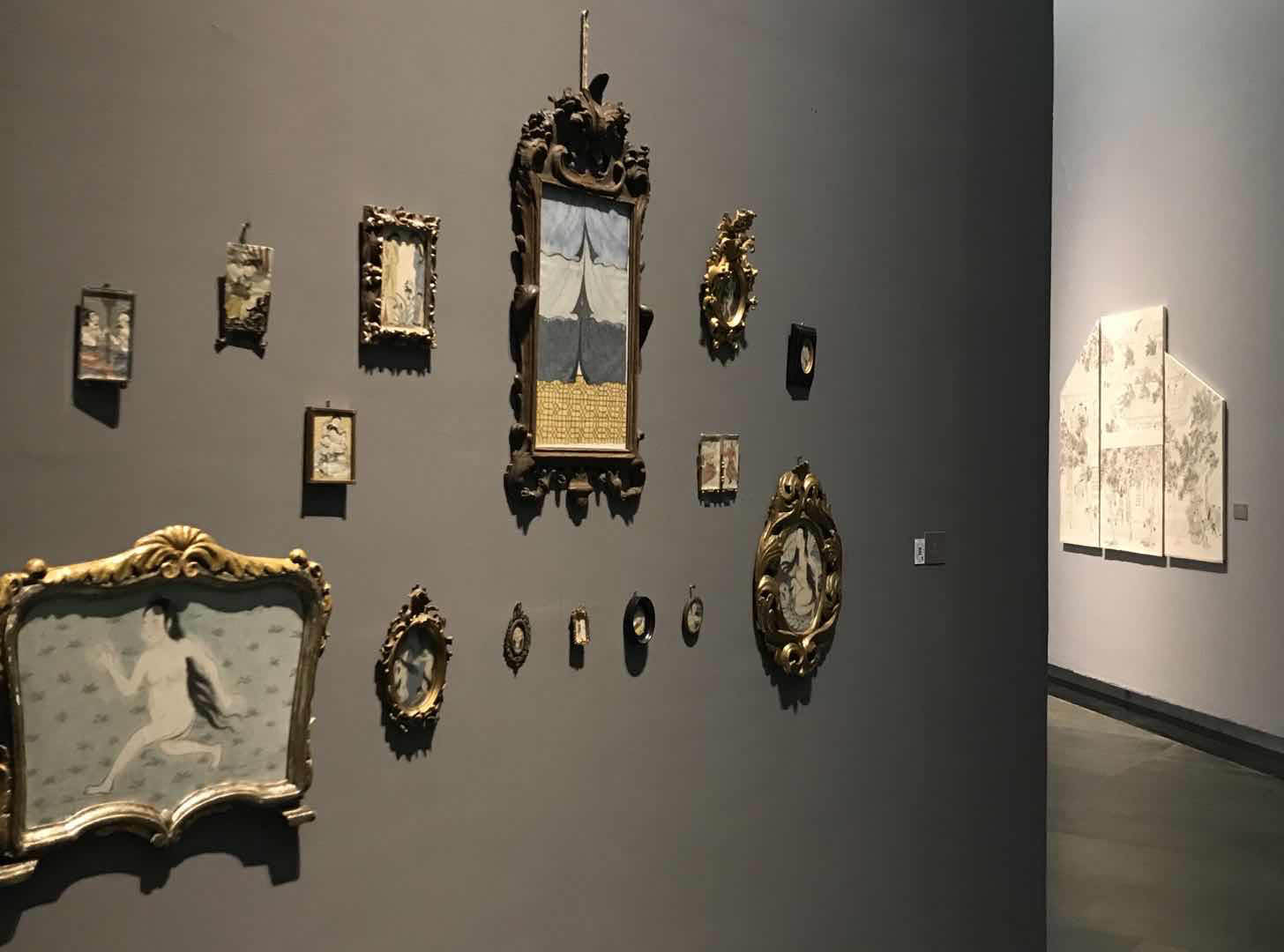
Works of art are the externalization of the artist’s experiences, encompassing the artist’s knowledge and training, emotions and thoughts, pursuits and creations. In looking at the exhibition, viewers can catch a glimpse inside the artist. They move from the white space of
Old Tales Retold and
Paragons of Feminine Virtue to the grey space of
In My Dreams and
Peep, then to the dark grey space of
Seven Nights and
Hi-Ne-Ni, where paper bodies and paintings face one another. Finally, on arriving in the black space of
Material World, viewers seem to enter Peng Wei’s emotional time and space. We realize Peng Wei’s motivation for repeatedly depicting the predicaments of women from years ago. The bodies and lives of women can never be separated; women always live in symbiosis with all of the other women who once existed in this world.
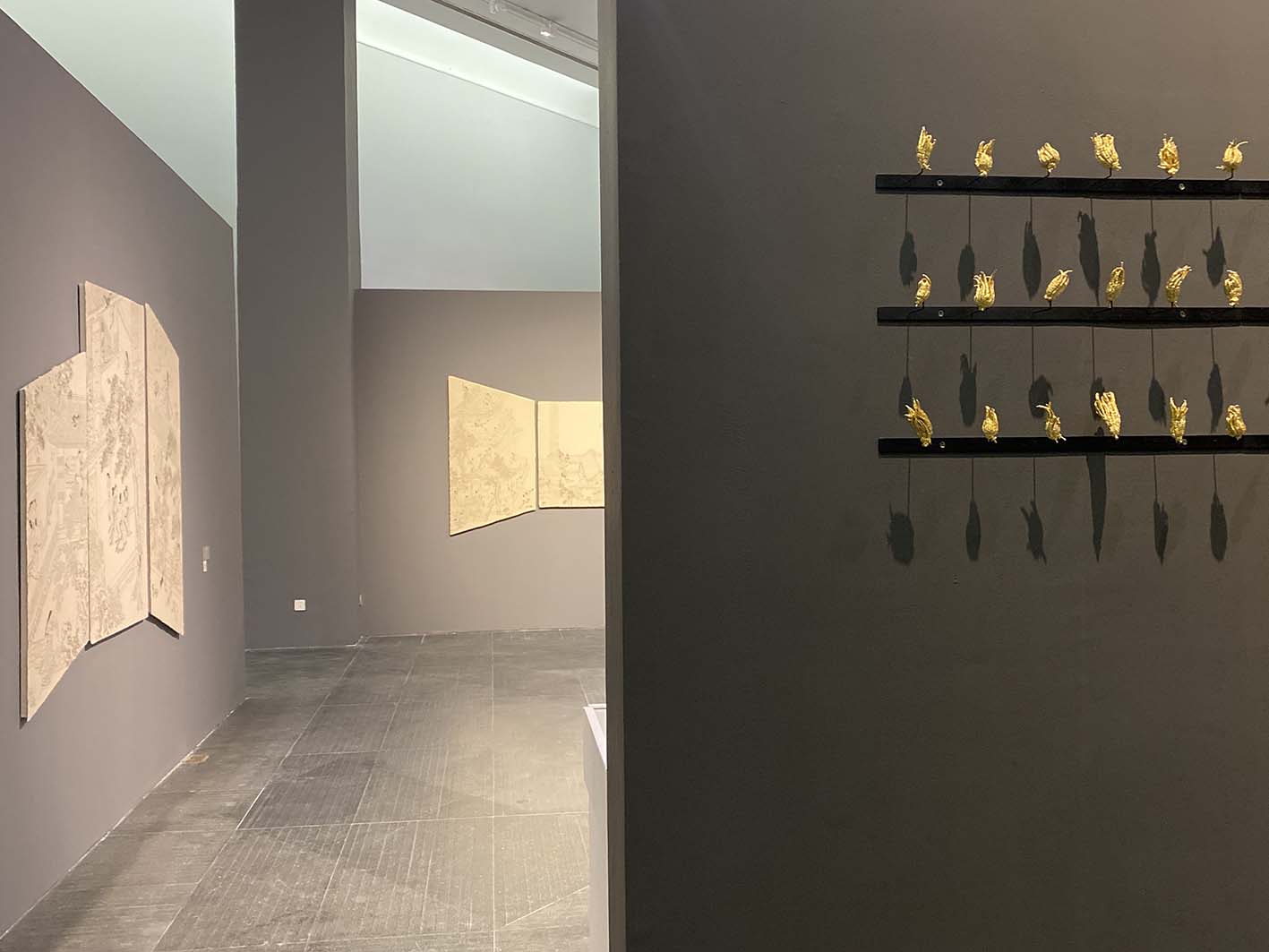
Peng Wei said, “I want to make use of present and past experiences, dreams, and realities and compress them into common memories, so that even a portion of the not-so-beautiful truth can be seen and understood. I recall reading that French author Marguerite Yourcenar said that, when looking at your past from a distance, you see a ball of chaos, you see how disorder and change guide a person’s life, just as they guide politics and other human affairs. When you delve deeper into that body, you can experience the metaphors and miracles always contained within ordinary events, how food and water are transformed into flesh and blood, how intimate relationships cause suffering and joy, and how people wake up every day from their dreams, like being brought back to life after death.”
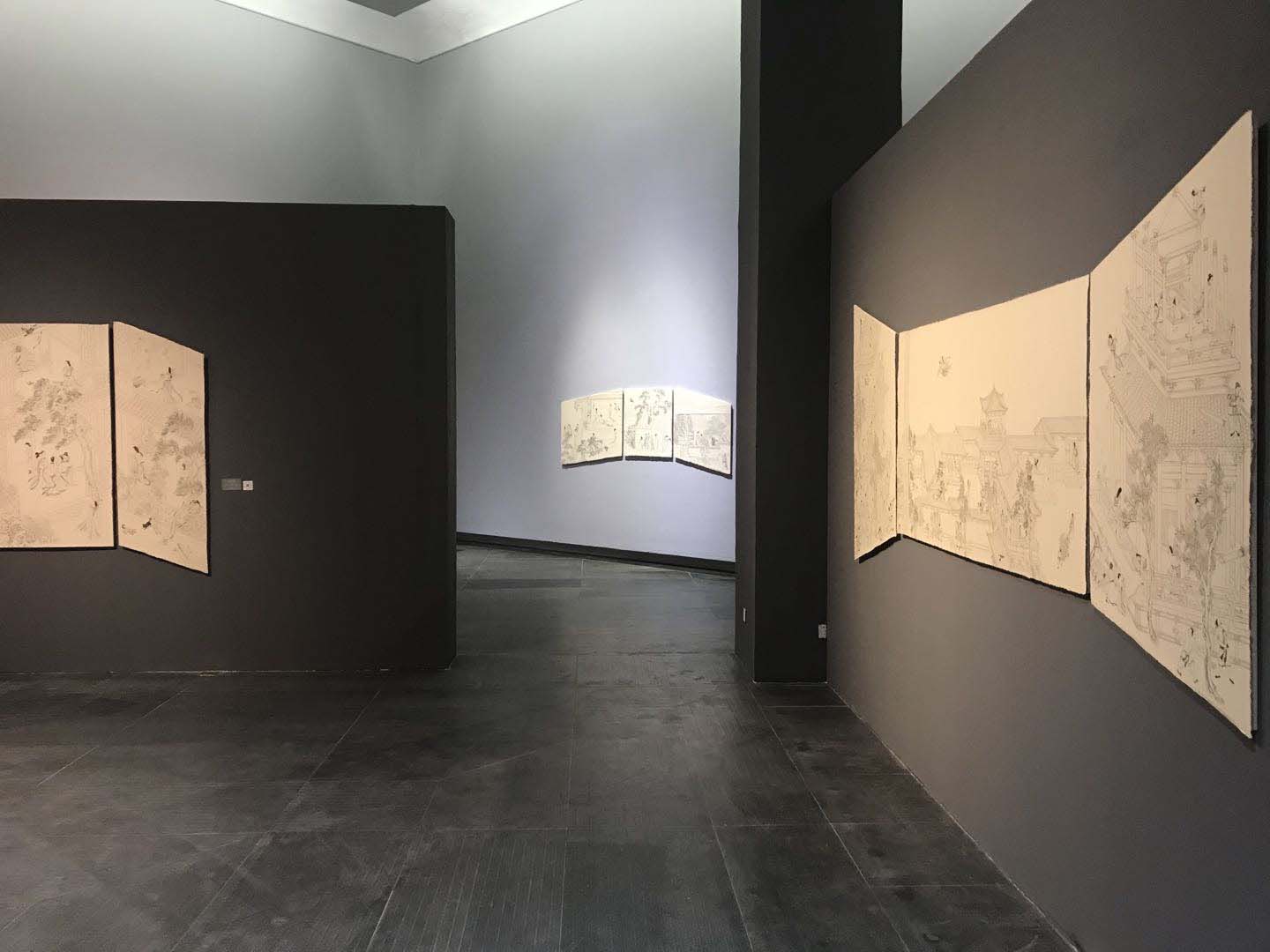
The current state of contemporary ink art and related case studies have always been a focal point of the Guangdong Museum of Art. Through the presentation of nearly sixty pieces over seven series made in recent years, we have attempted to bring viewers into the multi-layered and multi-dimensional feminine space that Peng Wei has created in her various ink works, which allow viewers to experience the various circumstances and fates of women.
About the Artist
Peng Wei is a noted Chinese contemporary ink artist. She was born in Chengdu, but currently lives in Beijing. She received her master’s degree in philosophy from Nankai University. Beginning with
Stone in 2000, Peng Wei created
Shoes,
Splendor in Ink and Wash,
Taking off the Shell,
Good Things Come in Pairs, Letters from a Distance, and
Seven Nights, which are important bodies of ink work in Chinese contemporary art that incorporate multiple media such as painting, installation, video, and photography. Relying on a solid foundation in traditional technique, the expressive methods of Chinese ink, and her unique, personal vision, Peng Wei links ancient artistic styles to the present, engages in dialogue with Western sources, and strikes a balance between past and present.
Peng Wei has held solo exhibitions in New York, Hong Kong, Taipei, Beijing, Shanghai, and Suzhou, and participated in the Beijing Biennale, the Chengdu Biennale, “Memory and Contemporaneity” (57th Venice Biennale Parallel Exhibition, Venice), “Copyleft: Appropriation Art in China” (Power Station of Art, Shanghai), “Translucence: Female Contemporary Art from China” (Centrale Électrique, Brussels), “Shanshui: Poetry Without Sound” (Museum of Art, Lucerne), “Chinese Whispers: Recent Art from the Sigg and M+ Sigg Collections” (Museum of Art, Bern), “Ink Remix: Contemporary Art from China, Taiwan, and Hong Kong” (Canberra Museum and Gallery, Canberra), “The Weight of Lightness: Ink Art at M+” (M+, Hong Kong), and other major contemporary art exhibitions in Asia, Europe, North America, and Oceania.
In 2014, Peng Wei was selected for the Signature Art Prize at the Singapore Art Museum
Peng Wei’s work has been collected by institutions such as the Cleveland Museum of Art, the Museum of Fine Arts Boston, the Asian Art Museum of San Francisco, the Brooklyn Museum, the Hong Kong Art Museum, M +, the National Art Museum of China, the Guangdong Museum of Art, the He Xiangning Art Museum, the Beijing Fine Art Academy Museum, the Suzhou Museum, the Sigg Collection, and the DSL Collection.
About the Curator
Wu Hung is a noted art historian and professor at the University of Chicago. In 1963, he enrolled in the Art History Department at the Central Academy of Fine Arts. From 1972 to 1978, he worked in the Painting and Calligraphy Department and the Bronze and Stone Object Department at the Palace Museum in Beijing. In 1978, he returned to the Art History Department at the Central Academy of Fine Arts to obtain his master’s degree. From 1980 to 1987, he studied at Harvard University, where he obtained a dual doctorate in art history and anthropology. He taught in the Art History Department at Harvard University and received tenure in 1994. He subsequently became the Harrie A. Vanderstappen Distinguished Service Professor at the University of Chicago, supporting their teaching and research programs in Asian art. In 2000, he established the Center for the Art of East Asia, where he serves as Director. The same year, he became the Consulting Curator of the Smart Museum of Art at the University of Chicago.








